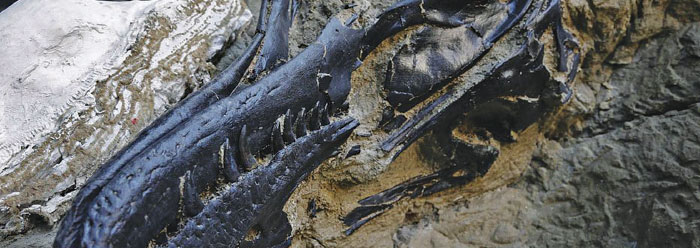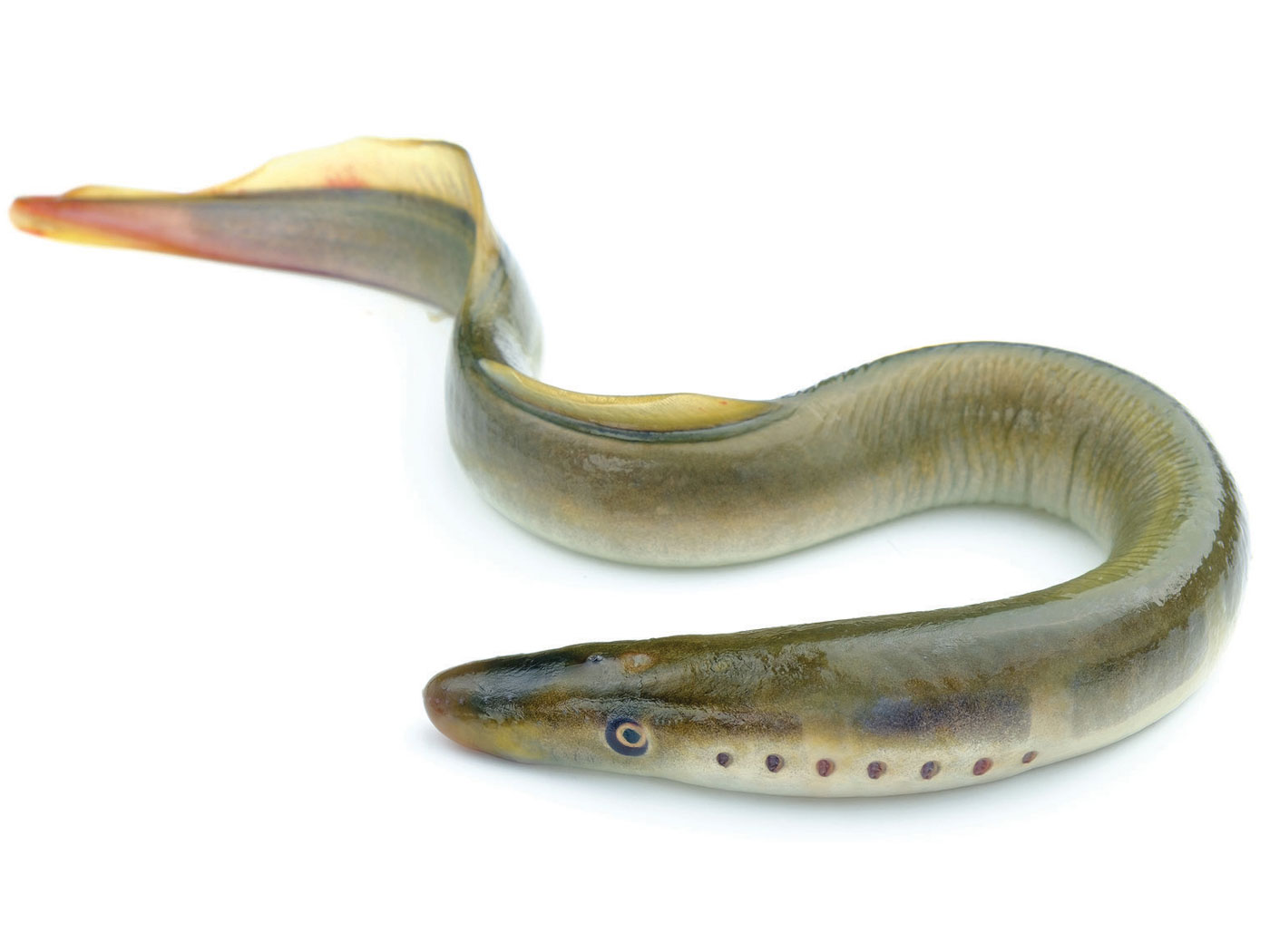For many years, paleontologists have known of marine fossils within various dinosaur-bearing rock units in the American West. These occurrences are largely ignored by mainstream scientists who deny that dinosaurs were buried in the global and recent Flood, as described in Genesis.
The Hell Creek Formation in eastern Montana has yielded many T. rex specimens, including well-documented dinosaur soft-tissue fossils. Surprisingly, in two volumes of papers published specifically on the Hell Creek discoveries, little is mentioned of the five species of shark and 14 species of fish fossils that are indicative of marine influence.1,2 Secular scientists either ignore these findings or dismiss them as all freshwater sharks and freshwater fish, in spite of the more likely conclusion that they represent marine organisms.
Other authors have studied the fauna of the Hell Creek Formation since the 1950s and found ample evidence of a mixture of marine and non-marine fossils.3,4 As Joseph Hartman and James Kirkland stated, “Although previously reported, knowledge of the continuation of marine conditions above the Fox Hills Formation [in the Hell Creek Formation] is not well or widely known.”1
It is now becoming obvious that the mixing of terrestrial and marine environments is not a rare occurrence in the rock record. Recent discoveries in Morocco and Europe have shown that most dinosaurs are found with marine fossils or buried in marine sediments.
Nizar Ibrahim et al. reported that sharks, sawfish, ray-finned fishes, and coelocanths were found in the same rock layers as a Spinosaurus dinosaur in Morocco.5 How can this be? Today’s coelocanths live about 500 feet below the ocean surface and not in freshwater rivers as many paleontologists have proposed. They dismiss the blatant physiological evidence from living specimens and insist that ancient coelocanths must have lived in fresh water simply because they are found in strata with dinosaurs. Where is the logic in this conclusion?
Zoltan Csiki-Sava and his colleagues surveyed all the recent research on dinosaur occurrences in Europe within the six accepted stages of the Late Cretaceous system. The team reported that “although isolated occurrences of continental [terrestrial] vertebrate fossils were occasionally reported from the Cenomanian to lower Santonian [lower four Upper Cretaceous stages] of Europe, these were mainly from marginal marine deposits.”6 And the vast majority of these dinosaur occurrences were even found in open marine chalk and limestone deposits mixed with marine invertebrates.
Their survey of the upper two stages of the Cretaceous also showed nearly all dinosaur fossils were located in marine rocks. Here, too, the paleontologists reported numerous discoveries of dinosaur remains in open marine chalk beds that are difficult to explain in a uniformitarian context. “Although these are isolated skeletal elements [individual bones] that washed out to sea, they are remarkably common and have been reported in surprisingly large numbers since the early discoveries.”6
Dinosaur fossils found in rock strata with marine fossils are commonplace, not the exception. The mounting empirical evidence cannot be ignored or simply explained away as a rare occurrence. The fossil evidence supports a catastrophic and global flood that mixed the marine realm with the terrestrial realm as tsunami-like waves spread ocean fauna and sediments across the continents. Genesis 7 and 8 describe this process better than any secular scientist could imagine.
References
- Hartman, J. H. and J. I. Kirkland. 2002. Brackish and marine mollusks of the Hell Creek Formation of North Dakota: Evidence for a persisting Cretaceous seaway. In The Hell Creek Formation and the Cretaceous-Tertiary Boundary in the Northern Great Plains: An Integrated Continental Record of the End of the Cretaceous. Hartman, J. H., K. R. Johnson, and D. J. Nichols, eds. Geological Society of America Special Paper 361, 271-296.
- Clemens, W. A. and J. H. Hartman. 2014. From Tyrannosaurus rex to asteroid impact: Early studies (1901-1980) of the Hell Creek Formation in its type area. In Through the End of the Cretaceous in the Type Locality of the Hell Creek Formation in Montana and Adjacent Areas. Wilson, G. P. et al, eds. Geological Society of America Special Paper 503, 1-87.
- Archibald, J. D. 1996. Dinosaur Extinction and the End of an Era: What the Fossils Say. New York: Columbia University Press.
- Lucas, S. G. 2007. Dinosaurs: the Textbook, 5th ed. Boston, MA: McGraw-Hill Higher Education.
- Ibrahim, N. et al. 2014. Semiaquatic adaptations in a giant predatory dinosaur. Science. 345 (6204): 1613-1616.
- Csiki-Sava, Z. et al. 2015. Island life in the Cretaceous-faunal composition, biogeography, evolution, and extinction of land-living vertebrates on the Late Cretaceous European archipelago. ZooKeys. 469: 1-161.
Image Credit: Copyright © 2013 AP Photo, S. Wenig. Adapted for use in accordance with federal copyright (fair use doctrine) law. Usage by ICR does not imply endorsement of copyright holder.
* Dr. Clarey is Research Associate at the Institute for Creation Research and received his Ph.D. in geology from Western Michigan University.






















